MANAGEMENT
Cyclone affected farmers grateful for support. PAGE 22-23
MACHINERY & PRODUCTS

New cultivator rips things up. PAGE 28

Cyclone affected farmers grateful for support. PAGE 22-23

New cultivator rips things up. PAGE 28
every little bit helps and he praises the work done by the Rural Support Trust.
WAIKATO SHAREMILKER Matthew
Zonderop says the last eight months have been the toughest in his 15-year dairying career.

Zonderop, chair of Federated Farmers Waikato dairy section, believes farmers have had to “use every trick in the book” to get through and this has been taking a toll on the mental health of many.
He isn’t surprised that Rural Support Trust has been fielding more calls from farmers around mental health and wellbeing.
Cyclones, flooding, flattened trees, low payout, soaring interest rates, high input costs and feed shortage have piled misery on dairying.
Zonderop’s system one farm in Te Poi hasn’t been spared. On the 140ha farm, Cyclone Gabrielle destroyed 10% of his maize crop. The farmer next door fared worse – his entire maize crop was flattened. Meanwhile, Zonderop’s bank plan interest rate jumped from 3.5% to nearly 11%.
“There’s no doubt the last eight months have been the toughest for us,” he told Rural News. “Everything you’ve learned about dairy farming, we had to condense it into eight months. It’s been very hard.”
Zonderop admits that he reached a point where he was struggling.
“I was thinking ‘where should I go, what do I do now?’ I had to do something.”
He started “a line by line” review
“They are an essential part of team ag,” he says.
Trust national council board member Mike Green describes their impact as far-reaching, saying for each person that attends, four more are helped, given the closeness of rural communities.
“Generally, after these events, we get a rise in calls and enquiries, quite often starting on the night of the event. People attending will often talk about their own problems, or those of family and friends,” he says.
Green says rising on-farm costs and compounding regulations are all adding to the stress for New Zealand farmers and others living rurally.



“Fortunately, what was once a taboo subject has now come to the forefront. The earlier people can get out of a negative space, the easier it is to move forward.”



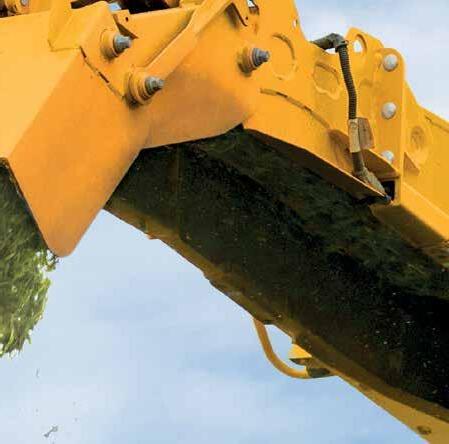











ANOTHER SEASON, another record milk payout from Tatua.
The dairy co-operative has paid its 101 shareholder farms a whopping $12.30/kgMS for milk supplied last season, again leaving Fonterra and other processors in the dust in the payout stakes.
Morrinsville-based Tatua’s earnings for the 2022-23 season equated to $15.20/kgMS before retention. The co-op has retained $2.90/kgMS or $43 million for reinvestment in the business.
Last year, Tatua paid its suppliers $11.30/kgMS, retaining $1.35/kgMS.
Fonterra last month announced a final milk price of $8.22/kgMS plus a dividend of 50c/share.
It was at pains to point out that it returned 50c/share to shareholders and unit holders, giving a final cash payout to farmers of $9.22 per share-backed kgMS.
In a joint statement, Tatua chairman Stephen Allen and chief executive Brendhan Greaney say they are pleased to report that Tatua has had another good year.

“In deciding our payout, we have sought to balance the needs of our shareholders’ farming businesses, in an environment where costs have increased well beyond mainstream inflation, and our need to continue to invest in the business while also maintaining balance sheet strength.”
Tatua’s gearing ratio averaged 21.7% for the year, but lowered to 16% at balance date, following the sale of higher than typical inventory levels.
The company added that in addition to achieving record income and earnings, good progress has been made in many areas of the business –including a number of significant capi-
tal projects and business improvement initiatives.
“Our teams in New Zealand and in our offshore subsidiaries have continued to demonstrate their commitment and dedication to the business and this is reflected in all that has been achieved,” Allen and Greaney say.
Tatua’s income reached a record $537 million, with earnings available for a payout of $225 million.
“Revenue from our bulk ingredients business of caseinate, whey protein concentrate (WPC) and anhydrous
milkfat (AMF) was the highest ever, buoyed by global dairy protein prices, which contributed significantly to our earnings uplift.”
However, the company warns that prices have subsequently fallen, which will result in more typical earnings over the year ahead.
“The bulk ingredients revenue uplift coincided with combined revenue from our inherently more stable specialised nutritionals, foods and flavours businesses also reaching a new high, and making a valuable contribu-
tion to overall earnings.”
Tatua processed 14.85 million kgMS last season, 1% higher than the previous season. However, it says the season was a game of two halves. “Wet conditions and lack of sunshine early in the season severely impacted supply, with milk received over the peak supply period 6.6% behind.
“Fortunately, those same wet conditions helped boost milk supply later in the season, to end 1% higher than the previous season overall.”
MONEY’S
From only $5,309+GST upfront +12 months free servicing.*
With payments spread over 2 years, no servicing costs for 12 months plus a class-leading 3-year warranty, we’re helping you into a new KingQuad with as little initial outlay as possible.

THERE ARE no quick fixes and times are going to be tough.
That was the strong message from both the Alliance chairman Murray Taggart and chief executive Willie Wiese at the first of the co-op’s farmer roadshow meetings held in Feilding, last week.

Taggart says the meat company will make a loss this year and that farmgate prices reflect what’s happening in one of its major markets – China. He says the economy in China is in bad shape with unemployment up, the real estate industry in chaos – all of which has led to a lack of consumer confidence.
Wiese later told Rural News that it could be a year or two before things come right and farmers need to understand that. He adds that there are some opportunities to pull things back and is cautiously optimistic.
However, Wiese points out that there are other factors in play, such as the geopolitical situation with the war in Ukraine, and Australia dumping low-priced lamb on the world market.
It’s fair to say the
mood of the 60 or so people who attended the meeting was pretty somber with questions confined to detailed matters such as loyalty payments and other price points.
He told the meeting that trading conditions for Alliance in the past year had been tough and the main reason for this is China – the home to 40% of NZ’s meat and dairy exports. He says post Covid, the draconian lockdowns the Chinese government imposed

forced people to consume local products.
“Historically, the Chinese wanted good quality products so they would come to NZ or Australia, but that’s changed,” Wiese explained.
“At the same time, they have become more efficient sheepmeat producers – as well as in beef and dairy – and this has led to them becoming more self-sufficient. There has been a big change in consumer behaviour brought on also because of the

high level of unemployment and less disposable income.”
He added that with China out of the market, other primary exporting countries are targeting the same markets as NZ and the pressure is now in all global markets. Wiese says, to some degree, the rest of Southeast Asia is also suffering from the same problems as China. But he says Alliance has found some great new opportunities –especially in Malaysia and Singapore.
Meanwhile, Wiese says Australia is unloading large quantities of what could best be described as commodity lamb on the market and undercutting similar product from NZ. However, he points out that while NZ competes with Australia at what he calls the auction market, Alliance sells 60% of its product to higher value outlets where there is no Australian competition.
@rural_news facebook.com/ruralnews
WIESE AND Taggart made it clear during the meeting that farmgate prices for lamb in the coming season will be down on last year.
They were talking in the range of $6.80 to $7.30 compared with $8.00 last season. This is on top of high farm-input costs, while some farmers are still dealing with the effects of the cyclones and the impending cost of meeting government regulations.
Wiese says the co-op’s aim in the next year is to do everything it can to get better returns to farmers. To that end, he says the company has restructured in a bid to cut operating costs and will focus on increasing enhanced products that provide better returns to farmers. He believes there are excellent opportunities in this area.
Wiese says Alliance is already a leader in applying technology wherever possible in its plants and it will continue down this track. But he adds that there are some areas – such as in the slaughter process – where it is not possible to apply automation.
“There are obviously automation opportunities from the warehouse management point of view, like we have done at our Lorneville plant. We can do more but often this comes down to competing priorities for capital,” he told Rural News
As to the future, he says there is chance that China may emerge faster than expected from its downturn. Wiese says the first sign of that will come if Chinese consumers start spending in some of the upcoming festivals in that country – such as the Chinese New Year. But he says Alliance has not factored that into its forecasts and it remains but a hope.
At home, Wiese says there is the prospect of what El Nino may bring – namely a drought – and the company has plans to cope with this.
“The most important message I have to farmers is to provide your livestock representative with clear and the most accurate forecast because of what is happening on your farm,” he told Rural News. “Then we can bring on the capacity to process the volume that is needed.”
OTHER COUNTRIES competing against New Zealand in China is being cited as one of the reasons for the pressure our red meat sector is currently facing.
NZ red meat exports for the month of August were worth $730 million – a 16% drop on the same month in 2022. The main decline was in exports to China, which were down 44% to $213m. In contrast, exports to
the US were up 26% to $188m, while exports to Canada were up 136% to $40m.
Meat Industry Association (MIA) chief executive Sirma Karapeeva says the decline in overall exports partly reflects last year was a record for exports in August.
But she adds that New Zealand is also facing growing competition in China.
“Meat competition has increased significantly in China and there are now 42 countries exporting meat to the country – 30 for beef alone. The volume of Brazilian and other South American beef on the China market is significant and it is driving down the price overall. Likewise, Australian producers are exporting significant volumes of mutton to China at a low price. Conservative consumer spend-
ing is also driving down pricing.”
Karapeeva says compared to last August, the volume of overall sheepmeat exports increased by 6% to 25,162 tonnes, but the value decreased by 13% to $236m.
She says the decline in value was mainly due to a decline in the value of exports to China, which were down 25 % to $73m – compared to August 2022.
“Sheepmeat exports to our other two major markets, the US and UK, increased compared to last August. The US is up 22% to $41m and the UK up 20% to $19m.”
The one bit of good news is that while beef exports to the UK are much smaller, NZ continues to benefit from the new beef quota under the UK Free Trade Agreement.
– Peter BurkeFARMERS WANT the Commerce Commission to investigate banks that are beginning to set targets to reduce greenhouse gas emissions on farms.
Federated Farmers dairy section chair Richard McIntyre claims NetZero Banking Alliance – a grouping of international banks committed to financing ambitious climate action to transition the real economy to net-zero greenhouse gas emissions by 2050 –raises serious questions whether the banks are acting in a competitive manner.
The BNZ is the first bank to announce a target in New Zealand, stating they aim to reduce greenhouse gas emissions from dairy farming by 11% in the next six years.
While two other major banks, ANZ and Westpac, are still considering targets, they are also part of NZBA. Members of the NZBA have 18 months from joining the alliance to formulate and declare their first set of intermediate decarbonisation targets.
McIntyre says he’s concerned with the banks working together on a lending strategy.
“This banking alliance
raises some very serious questions about whether our banks are acting in a truly competitive manner, or if the joint commitment is effectively banks collaborating on a joint lending strategy,” he told Rural News
“Individual companies are free to put in place whatever requirements they like, but we have a real issue when the main competitors are collectively setting requirements that leave farmers without choices.”
McIntyre believes there is potential for the
Commerce Commission to consider what pre-competitive commitments banks in New Zealand can make before consumers’ rights to a competitive marketplace are compromised.
BNZ general manager agribusiness, Dave Handley, says the bank has begun setting and disclosing decarbonisation targets, publishing its first set of targets in May, covering a range of industries including dairy.
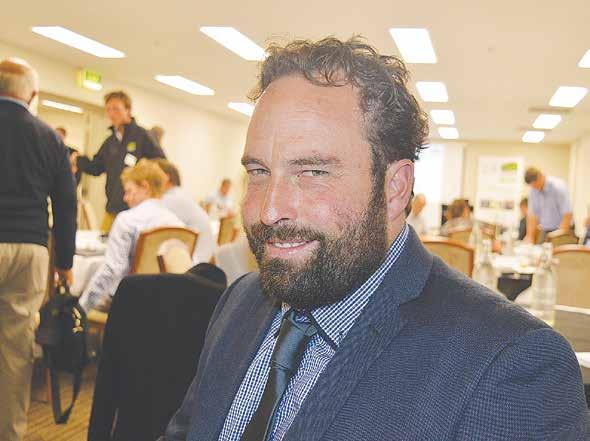
He points out that it’s important to note
that while legislation sets the framework, the type of target varies and can be an absolute emissions reduction target or a physical intensity emissions target.
“BNZ’s dairy target specifically focuses on emissions intensity associated with each kilo of milk solids produced, not absolute reductions,” Handley told Rural News
“Recognising the dairy sector’s crucial role in New Zealand’s economy, our aim is to encourage growth in the sector by aiding it to become more
efficient and sustainable, producing more with fewer emissions.”
Westpac head of agribusiness Tim Henshaw says the bank’s proud to be a part of the NZBA.
“We’re working closely with our agri customers to help them manage climate-related risk,” he told Rural News “We’ve shared insights with them through the Westpac Agribusiness Climate Change Report.
In June this year we launched a Sustainable Farm Loan which incentivises positive actions
for building climate resilience into agri-businesses.
“We don’t have any targets to announce at this stage. However, we expect to set targets in the future in line with our NZBA commitments.”
An ANZ spokesperson says as the country’s main bank for more than 34% of farmers, they are aware of the changeable landscape farming customers face. ANZ claims it works closely with farmers to understand their specific challenges.
“We have not set
financed emissions targets in NZ for agri. The ANZ Group’s commitment to Net Zero Banking Alliance includes examining the feasibility of setting a sectoral pathway for food, beverages & agribusiness, and we expect this will include New Zealand lending.

“One of our key focus areas this year in New Zealand has been to gain a deeper understanding of climate risk in our agriculture portfolio. Our immediate focus is to support our customers with decisions on managing and mitigating environmental risk, and to support the shift to more sustainable practices by removing some of the cost barriers businesses face. “
ANZ gave as an example its Business Green Loan, which allows eligible customers to borrow up to $3 million at a special floating rate, which can be used for investments in renewable energy, energy efficiency, sustainable land and water use, green building projects and clean transport.
McIntyre says banks should be working with farmers, rather than slapping on targets, as “a good practical way forward”.
We want to hear what you think about our proposed plan to administer the M. bovis Programme in the coming years
Submissions close 23 October 2023.
We are seeking feedback on the proposal especially from those who play an important part in the ongoing success of the eradication programme including farmers, meat and dairy processors, testing labs, and vets.
You can find the full draft proposal and more information - including how to make a submission - on the MPI website: www.mpi.govt.nz/consultations.

As the eradication effort enters a new phase, evolving the programme will ensure it continues to adapt to the work that remains ahead.SUDESH KISSUN sudeshk@ruralnews.co.nz Feds dairy section chair Richard McIntyre claims the Net-Zero Banking Alliance raises questions whether the banks are acting in a competitive manner.
McIntyre believes there is potential for the Commerce Commission to consider what pre-competitive commitments banks in New Zealand can make before consumers’ rights to a competitive marketplace are compromised.
council.
FONTERRA
CHAIRMAN Peter McBride claims an uncontested director election this year reflects the calibre of the two board members up for re-election.
Sitting Fonterra board members Brent Goldsack and Cathy Quinn are unopposed.
However, as this is an uncontested election, under Fonterra’s board election rules, both sitting directors must gain more than 50% support of votes cast to serve another three-year term.
When nominations for the non-assessment process closed last month, Goldsack and Quinn were the only two candidates. This is the first time in
the co-op’s history that director elections have not been contested.
McBride told Rural
News that while shareholders believe their co-op is well governed, it also reflects the skill sets
of Goldsack and Quinn.
“No one else came through the nomination process; that shows the

co-op is well governed and the calibre of the incumbents,” he says.
Fonterra Co-operative
Council chair John Stevenson is also unopposed for another three-year term on the
Meanwhile, former Fonterra Co-operative Council chair Simon Couper is making a comeback to a governance role within the co-operative, 11 years after resigning as chair. Couper stepped down as council chair in 2012, unhappy with some aspects of the proposed Trading Among Farmers (TAF), which was later approved by farmer shareholders.
Voting Packs containing candidate profiles will be mailed to eligible shareholders from Monday. Shareholders can vote online or by post from Tuesday, October 17. Voting closes at 10.30am on Tuesday, 7 November 2023 with the results being announced later that day.

THE COST of living crisis is putting even more pressure on farmers to ensure they are delivering what customers want.
This is what KPMG head of agribusiness Ian Proudfoot told the recent New Zealand Grain and Seed Trade Association conference in Auckland on the outlook for the agricultural sector. He added that the everyday low price supermarkets offered was the “unassailable truth.”
“There’s pressure to make food even cheaper.
The challenge for farmers is to be sure it reflects the effort that goes into producing it, as well as satisfying the consumer,”
Proudfoot said.
He added that super-
markets had to make sure that the product was right, packaging fitted shoppers’ requirements and that channels by which goods reached them were suitable. This

$22,895

could mean decisions such as whether meat products needed to be 100% pure or could be blended with pulses.
Proudfoot says no one in the NZ agricul-



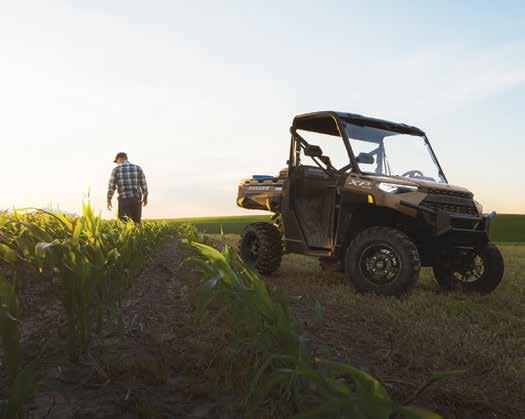

tural sector is performing better than the others but some companies had shown themselves to be more agile in responding to trends.
He added that the Chi-
nese market was going through a fundamental reset of its economy, meaning NZ companies needed to think more about more market optionality. Proudfoot says it’s critical we to continue with free trade agreements. He says while NZ had thought about India for a long time, it now needed to be moving things further and faster – especially with Australia gaining the same first mover advantage there which NZ had enjoyed in China.
Proudfoot added that NZ exporters also needed to be thinking about competitors they hadn’t seen before such as Saudi Arabia and the United Arab Emirates. He says both wanted to ensure food security through use of disruptive technology to grow food in their harsh environments.
Proudfoot said NZ needed “better biology quickly” which meant setting the right regulatory environment for agriculture to be able to access and use lighter chemicals
and gene editing technologies. Agriculture needed to be open to using artificial intelligence and “run at the horizon as fast as we can”. Through investment in automation and use of robots farmers would be able to develop the people employed in the sector more. They would need to be employers of choice not relying on transient workers meaning use of a different skill set for some. And when it came to consumer trust in new farming methods he said the answer was to shine a light on their operations in an open, honest and comprehensive way.
“Explain your business and show you’re doing the right thing by use of robust data.”
“There’s pressure to make food even cheaper. The challenge for farmers is to be sure it reflects the effort that goes into producing it, as well as satisfying the consumer.”Ian Proudfoot says the Chinese market is going through a fundamental reset, meaning NZ companies needed to think about more market options.

FONTERRA SAYS a new government won’t impact plans to reduce emissions – both within its operations and on shareholders’ farms.
Chair Peter McBride says Fonterra must continue working towards its decarbonisation ambition, including meeting scope 1 and 2 targets.
“It’s important for our farmers and our customers,” he told Rural News Fonterra also plans to release its scope 3 target – for emissions generated beyond the farm gate – by the end of this year.
McBride says during the recent farmer shareholders meeting, there were “varying degrees of interest” in scope 3 target.
“Farmers realise the need to have scope three target; it will be a cooperative-wide target, not an individual target,” he claims.
“We are working to announce it by the end of the year and we need to get it right.”
McBride says the cooperative will work with whoever forms the next government.
Farmers have had a testy relationship with the Labour Government. Differences include the deadline for meeting greenhouse gas emissions and pricing under the Zero Carbon Act.

National and ACT have both promised a better deal for farmers in
their respective agricultural policies. National has vowed to keep agriculture out of the Emissions Trading Scheme (ETS) but implement a “fair and sustainable” pricing system for onfarm agricultural emissions by 2030 at the latest – five years later than the current ETS.
ACT says industryled initiative He Waka Eke Noa will be gone by the end of this year. The party opposes the Zero Carbon Act and says farmers shouldn’t pay for
emissions.
Fonterra shareholder
Craig Hickman says at Fonterra’s Ashburton farmer meeting, emissions came up during a Q&A session, with some farmers implying that a change in government would put emissions on the backburner.
Hickman told Rural News that he was impressed with the reply from chief executive Miles Hurrell and directors at the meeting.

“The CEO and directors were very emphatic
that reducing emissions are a priority, even if they weren’t for a government,” he says.
“I agree with them. Miles carries a lot of mana and has the ability to tell people things they might not like hearing, and they accept it.”
Fonterra recently announced a lift in its decarbonisation ambition with a new scope 1&2 emissions reduction target, which will be achieved by bringing forward some of its work to get out of coal.
Hurrell says the co-op is targeting a 50% absolute reduction in scope 1&2 emissions by 2030, an increase on its previous target of a 30% reduction by 2030.
“Fonterra’s scope 1&2 emissions largely come from our manufacturing operations and supply chain. Strengthening our emissions reduction target supports our ambition to be net zero by 2050,” Hurrell says.
Achieving the new target will require Fonterra to continue to
undertake energy efficiency improvements and fuel switching to renewable energy source activities across its milk collection fleet and manufacturing sites, with a focus on the six where it uses coal.

To do this, Fonterra is forecasting an investment of $790 million, including a government contribution of up to $90 million through the Government Investment in Decarbonising Industry (GIDI) fund.
The co-op says its
major global customers – the likes of Nestlé – are reducing carbon output by focusing on its own emissions and that of its supply chain. A big part of the supply chain is ingredients: one of Nestlé’s biggest ingredients is milk.
Hurrell warns that Fonterra’s failure to join the decarbonisation bandwagon could result in customers like Nestlé looking elsewhere for dairy ingredients.
@rural_news facebook.com/ruralnews
RABOBANK’S SEPTEM-
BER agribusiness report shows farmgate price pressure is expected to remain, with weak fundamentals underpinning difficult trade conditions.
It says dairy prices, hammered hard by August’s low forecast price, are likely going to remain sluggish with slowed demand from China as its economy undergoes a rebalance. Global milk production is beginning to see signs of a slowdown ahead, NZ milk flow for the first two months of the 202324 season predicted to be 1.3% behind on tonnage basis and fewer cows with lower yields in the Northern Hemisphere are expected to see growth rates flatten or drop.
Following slips in July, farmgate beef prices started tracking upwards in August, with production values for all cattle categories close to last year’s level. Rabobank says this is in line with seasonal trends, as slight changes in certain areas were generally offset in other areas.
Lamb prices stabilized throughout August but remain historically low.
The report says demand from key markets is weak, with the average price for August 25-26% lower than the previous year. July sheepmeat exports were down 25% YOY.
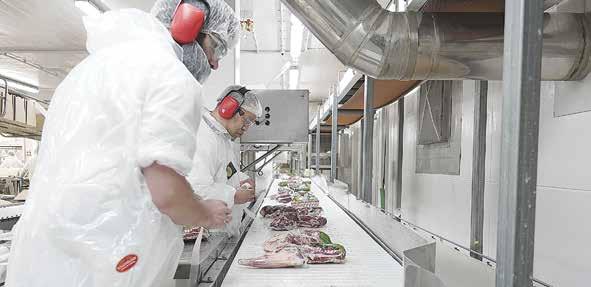
However, lamb prices received in New Zealand (NZ$6.95/kg) remain significantly higher than in Australia (NZ$3.254.35). This is somewhat offset by larger Australian export volumes to China and a lower price providing tougher market competition.
The NZ dollar fell almost 3% in August as uncertainty over China’s economy impacted the outlook for commodity exports. Rabobank says this makes the NZ dollar one of the worst performing major currencies over the period.
It says the slowdown in Chinese activity is being felt in many countries that send large numbers of imports to the country, with recent trade data showing a substantial fall in imports and a softening of manufacturing and service sectors.
Although the lower NZD could cause problems – as a weaker currency makes imports more expensive and potentially imports infla-
tion – Rabobank does not predict any further increases to the official cash rate, saying figures point to the RBNZ leaving the OCR where it is.
Successful forage brassica and pasture production is highly dependent on the first six weeks of a plant’s life. Ultrastrike® and Superstrike® seed treatments include insecticides, fungicides and nutrients to maximise seedling establishment, helping to deliver higher yields and improved animal production. For more information, talk to your local seed retailer or visit seedtreatment.co.nz
PROTECT YOUR SEED, PROTECT YOUR FUTURE.
IF HIGHER PRODUCTION IS YOUR END GOAL… THEN LOOK TO THE START TO ENSURE YOU ACHIEVE IT.
MINIS -
TER Damien O’Connor reckons his Government is not to blame for onfarm pressures.
In an interview with Country TV in its focus on the election, O’Connor claimed NZ farmers were facing huge inflationary pressures due to the

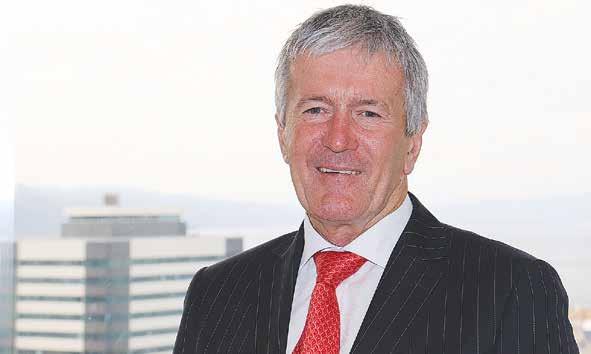
Russo-Ukrainian war.
“The Ukraine war has put huge pressure on fuel costs and that has flowed right through,” said O’Connor. “We’ve seen that and many other countries are fighting inflation, just as we are as well.”
O’Connor conceded that there is frustration in the farming sector but
4 Change, those who made signs and waved from the roadside, those who came out to our Policy Bonfire and our event at Ellerslie, and those who watched our journey online from afar. Thank you!
Our message was simple: things are bad, you need to vote, and you need to vote for change.
When rural New Zealand is thriving, so is the rest of the country www.groundswellnz.co.nz
said the Government was a “good kicking horse”.
“You can just flog us, but actually, we’re not to blame for many of the pressures on-farm,” he says. “I think farmers need to be honest about that because, if they think a change of government’s going to relieve all that pressure, they’re dreaming.”
O’Connor was ada-
mant that there are underlying structural issues in the sector that “need to be addressed and rectified”.
“It won’t happen overnight. We’ve got to take a long-term approach to this because it’s really important that future generations in farming can firstly see the incentive to get into it and then stay in it.”
The long-time Labour MP also claimed that some of the rhetoric from different organisations and political parties was not helping the situation.
“It’s a lot of rhetoric and it’s been run up by organisations like Fed Farmers under Andrew Hoggard, but some of the messages that they were sending to farmers were quite inaccurate.”
O’Connor pointed to the saga surrounding Intensive Winter Grazing (IWG) practices as an example.
He says when changes to winter grazing regulations were made, Federated Farmers claimed that as many as 10,000 consents would be required.
“We’ve had 300 consents issued. But saying


ACT’S AGRICULTURAL spokesman believes farmers are not celebrated enough for the work and income they earn the country.
In an interview with Country TV, Mark Cameron says farmers are what they do.
“Quite often, what was happening on farm and is happening on farm isn’t in lockstep with the language in politics.”
Cameron feels it has been his
role for the past three years to remind his fellow parliamentarians that farmers are good at what they do. A dairy farmer for more than 30 years, Cameron came to Parliament in the 2020 election when ACT picked up 10 seats.
“I’m really collegial with some of these people,” he explains. “But they don’t live it (farming), they don’t do it.”
Cameron reckons many farm-
ers just want people to acknowledge that they are good at their roles and deserve some credit for the work they are doing. He adds that farmers just need assistance and the opportunity to innovate, as opposed to leaving them “under the table, fighting for the scraps”.
He believes that the current Government has to take much of the blame for the anti-farm-
that there was a need for 10,000 did cause a panic across the farming sector. That was unnecessary and so there’s a lot of rhetoric out there which is causing alarm among farmers.”
However, when O’Connor made the same claim at the recent Rural Issues debate at Mystery Creek, former Feds president and ACT candidate Andrew Hoggard said it was probably because most farmers “couldn’t be arsed applying for the consents” and just went ahead with their normal winter grazing practices. Meanwhile, O’Connor’s ‘300 consents’ figure did not include the number of farms which were issued permitted activity status by regional councils –such as Environment Southland – because they could not meet the slope criteria but had met all other requirements of the consent process.
ing sentiment that has appeared in recent years.
“Why was it such that a narrative of us as being really good farmers seems to be disappearing?
“We feel like we were no longer that part of society that is celebrated. It is more ‘you lot are the reason all these things are going wrong’ and I take umbrage with that.”
• Ideal for Cattle Troughs

• High Flow
• Side/Bottom Mount
• Detach to Clean
• Compact/Robust
• Up to 50mm Inlet
• Flows up to 600L/min

• For Storage Tanks

• Easy Access to Valve

• Inlets Upto 50mm
• Avoids Starting & Stopping of Pump When Tank is Filling
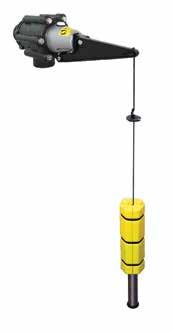
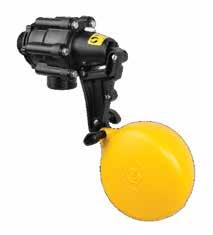

ZESPRI’S KIWIFRUIT harvest from its Northern Hemisphere growers is set to exceed previous crops.
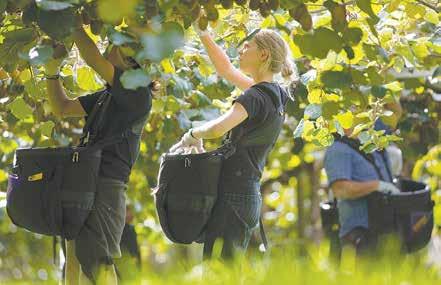
Zespri’s Nick Kirton says the company’s Northern Hemisphere sales programme has just commenced with it expecting to sell around 29 million trays. This amounts to just over 100,000 tonnes of kiwifruit from orchards throughout France, Italy, Greece, Korea and Japan. He says this compares with 24 million trays or 88,000 tonnes sold last season.
“This season’s harvest will be our biggest yet and we’re looking forward to providing consumers with more high-quality and great-tasting kiwifruit as we transition from NZgrown fruit to our Northern Hemisphere-grown fruit.”
For more than 20 years, Zespri has built up a cohort of around 1500 growers and suppliers in the northern hemisphere to complement the
fruit grown in NZ. This enables Zespri to have kiwifruit on supermarket shelves for 12 months of the year.
Kirton says this season’s Green sales volumes are expected to remain steady compared with last year, while SunGold Kiwifruit sales are projected to increase by 25%, reflecting improved growing conditions, increased yields and new production.

He notes that this season’s strong harvest was even more pleasing given the challenges faced by growers in both Europe and Asia last year. Kirton says that following a season review, Zespri initiated action plans across all Northern Hemisphere regions to address the issues of last season to focus on outcomes that would lift returns for growers.
He says this included on-orchard and supply chain improvements and working closely with market teams to achieve the best outcome for








LIZ SHACKLETON has been appointed as the new chief executive of Animal and Plant Health New Zealand, effective from 30 October 2023.
Originally from Ireland, Shackleton grew up farming and started her career as a rural veterinarian in the Waikato and Wellington regions. Having held leadership roles in MSD Animal Health’s regulatory areas, Shackleton has been leading the DairyNZ Biosecurity team including the Mycoplasma bovis Programme team since 2018.
Co-president of Animal and Plant Health NZ Vanessa Macdonald said that Shackleton’s wealth of experience across public and private sectors will be instrumental in implementing the organisation’s strategy of prioritising sustainable agriculture through ensuring the health of crops and animals.
Shackleton says she is excited about the opportunity to lead the organisation, given the critical role that healthy crops and animals play in safeguarding our sustainability.
“The potential for tomorrow starts with the work we do today to be match-fit for a better world. That starts with people, listening to and representing our members in a changing landscape.”
Animal and Plant Health NZ says the country’s primary sector generates $55 billion in export earnings. The membership association says it works closely with government agencies, industry groups and other stakeholders to help bring the necessary innovations to manage pests and diseases so that NZ food can be grown sustainably, efficiently and effectively.
growers.
“Last year was a particularly tough season for our growers in Europe and Asia, with sustained extreme heat and weather events impacting fruit size, yield and quality.
It is fantastic to see the orchards rebound this year.”
Zespri expects its Northern Hemisphere supply programme will continue to grow and to double in volume by 2030.
A GROUP of New Zealand farmers and investors stand to lose millions of dollars following the collapse of one of Chile’s largest dairy businesses.
Around 18 New Zealand dairy and kiwifruit farmers and investors – from both here and in Chile – poured over US$50m into Chilterra since its formation in 2006. Late last year the company went into “judicial reorganisation”, owing US$60m to a consortium of banks.
Chilterra owns 7200ha of farmland, has nine milking parlours and more than 13,000 cattle. The farms are within 100km radius of Osorno, Southern Chile, an area known for its dairy farming and similarities to New Zealand soils and climate.
Sources have told Rural News that the firm collapsed due to a combination of factors – low milk price, poor farm management practices and soaring input costs. There was also a breakdown in the relationship between majority Chilean investor Ricardo Rios and the NZ investors.

While Chilterra did well in its early years, differences emerged between NZ and Chil-
NOT ALL New Zealand dairy investments in Chile have run into trouble.
Manuka SA in Chile is 80% Kiwi-owned and today has 59 dairy farms and 70,000 cattle –including 48,000 milking cows – in the South American country. Manuka produces 10% of Chile’s milk.
Manuka founder Mark Townshend told Rural News that the company is achieving what it set out to do and produce NZ levels of production per hectare – 1100-1300 kgMS/ha –and at NZ equivalent cost of production on lower cost land assets.
“It has been a growth story starting with one man, Conall Buchannan, and one farm in 2005 and growing through to a Chilean workforce of 600 people across the business today,” Townsend told Rural News. “The keys to success have been ‘kiwi control’ and employing good Chilean executives.”
ean business partners as more money was needed to keep the company going.
“It was very poorly run, NZ investors were kept in the dark, the company borrowed to the hilt and NZ farmers and investors had little or no say at all in the running of the company,” sources say.
NZ farmers, who invested in Chilterra, are refusing to comment in fear of reprisal. The company’s board was chaired
by Waikato ag consultant Mike McBeath and included several New Zealand farmers as directors.
Questions from Rural News to McBeath were unanswered.
Hamilton-based ag investment company Waibury is also an investor. Waibury’s website describes Chilterra as “a joint Chilean/New Zealand enterprise with technical expertise provided by Kiwi investors for the Kiwi pastoral farming
system practiced”.
Waibury shareholder and Chilterra director Bill Donaldson didn’t respond to questions by Rural News.
However, an email to NZ shareholders in June last year, after the company’s 2021 annual general meeting, confirmed “negative working capital and negative results for the year”.
The email shows NZ investors were unhappy “with the collective performance of the board
and Chilterra”.
“They are deeply concerned about the financial position of the business based on the financial statements. There has never been a review of any performance despite significant differences in actual performance against budgeted performance.”
The NZ investors also requested the directors to submit a vote of no confidence in the Chilterra board.
The email states

that Chilterra’s financials “continue to show the same trends as in the past with significant growth in liabilities”.
“Granted this has been offset by significant value increases, so the technical equity reported remains static.”
The NZ farmers expect Chilean banks to take a haircut and sell the farms to recoup whatever they can – leaving nothing for investors.
Townshend says the recent sale of the Soprole business in Chile by Fonterra has provided clarity.
The milk price in Chile today is at around NZ$9.30/kgMS. Cashflows have been tight with higher interest rates, but the inflation rate is now back at 5%.
Townshend says, like in NZ, success in large scale farming in Chile is all about low-cost milk production, excellence in management and good stakeholder support and engagement.






Does this government have a specific emissions reduction target for agriculture?
Is this government proposing to tax their farmers on ruminant methane?

JUST OVER 12 months ago, this group of concerned farmersalongside others - revealed the true picture of what the industry bodies had collectively recommended to the government for pricing agricultural emissions. And we called for them to stop.
What has transpired since you couldn’t have scripted any better as some sort of parody horror show. He Waka Eke Noa – we are all in this together. Yeah right.
The government came out with their version with a couple of tweaks to the industry version, the industry were “disappointed”, the government went quiet, the industry changed their position and took the opportunity to insert their “bottom lines”, the Chair of Beef+Lamb NZ was voted out, Beef+Lamb NZ were inundated with remits voicing farmer dissatisfaction, HWEN (the partnership) was pronounced ‘dead’ - then ‘sleeping’ - then silent and then, in a desperate political move, the government has pushed out the tax a few months in their updated policy which is still the original – slightly tweaked.
It’s been like watching the actors leap off a cliff trying to knit themselves a parachute on the way down!
According to O’Connor we have to price emissions because our trading partners require it. Well no Minister – they do not. There is no other country in the world who are taxing their farmers. Indeed, our trading partners are already subsidising their food production and will continue to do so.
So, can the Ministers of Agriculture and Climate Change tell us again...
Why do we need a farmer methane tax to trade with these countries? And why do we need to ‘lead the world’ in taxing our farmers?
Wake up New Zealand! Our farmers are already the most efficient in the world. We are already reducing emissions - there is no justification for another tax!
on farmers to “tick the emissions box” (and some companies are actively pushing this by the way), it is outrageous that politics should have any part of market and commercial relationships. Let the market decide, free of any regulatory and political interference. Farmers respond to price signals –show us the money. And we might add a “be careful what you wish for”.
Those of us who have had the temerity to question the shambolic principles and process to date are not “laggards” or “climate deniers” or “ignorant of the facts”. In fact, it is quite the opposite. Some industry commentators who quite frankly only have a job because of the “farmer economy”, seem to delight in pointing out how backward some of us are in our thinking and how we have to change.
We are by nature common sense, practical, innovative problemsolvers. It’s what we do every day. We are not averse to playing our part in addressing an issue in a way that makes sense – not at all.
So here is the inconvenient truth for the current protagonists delivering their unhelpful and faulty messaging. Those who continue to push the need to tax farm production and productivity in order to reduce emissions (or is it generate revenue for research, or is it for our trading partners and customers – we lose track).
No, NZ agriculture does not remotely make up 50% of our country’s climate warming emissions.
to look for opportunities for increased efficiency, productivity and profitability and will respond to market pricing signals.
No, we will not accept the imposition of a tax on domestic food production when none of our trading partners who are less efficient are doing the same.
Let us be clear – there is absolutely no justification for a punitive tax on methane emissions for the sheep and beef sector.
Understanding and being politically honest enough to recognise the scientific and commercial reality is the challenge that we put out to the current government and any other political aspirants in this election year.
We encourage farmers to scrutinise the agricultural policies of the various political parties carefully.
Just as we encourage you to engage with your meat company to ask about their position on the emissions tax proposals.
Given this is purportedly a journey of 30 years, what is most important is that we are actually heading in the right direction, toward a logical target with the right choice of vehicle to get there. Those are the important things still to be sorted, and any premature trumpeting should be consigned to the dustbin of history.
Apparently our customers require it. Really? There are commercial contracts which require NZ food producers to have a tax on their emissions?
Or is the true reality that our customers will increasingly require us to address our emissions and make reductions – alongside other environmental, food safety and animal welfare actions?
Whilst we see that it would be convenient for our commercial companies to see a tax being imposed
Yes, sheep and beef farmers have reduced our emissions and emissions intensity to a point now where we are near zero warming or close to it. And the impact of 200,000 hectares reduction of land area to large scale pine plantations over the last 5 years will only serve to further accelerate this reduction.
Even more - we are collectively the largest custodians of biodiversity outside of the Department of Conservation.
Yes, we are amongst the most emissions efficient food producers in the world.
Yes, we will continue
When the target has been adjusted to account for the latest science – the warming impact of our activities - and when the mechanics of getting there have been rewritten to focus on market-led incentives, the ability to use our own woody vegetation (and dare we say it – soil?), the investment into and implementation of tools and mitigations instead of punitive government taxation - then the going will be easier, then progress can be made.
But until that point of agreement is reached we will continue to go around in circles, in this vortex of politics and pedestals - a whirlpool of ‘bugger-all’. Graeme Gleeson, Roger Dalrymple, Jane Smith, Jason Barrier, Kirsten Bryant, Rick Burke, Ben Ensor, Simon Hales, Mike Cranstone, Kerry Worsnop
IT’S TIME to hit pause on the myriad of regulations being implemented on the sheep and beef farmers.

That’s the call from Beef + Lamb NZ (BLNZ) following the release of a report which highlights the cumulative effects of the Government’s environmental reform agenda on farms. Carried out by consultants BakerAg, BLNZ says the report shows that the raft of new and proposed environmental regulations has created significant administrative and financial burden for farmers.
“The report reinforces BLNZ’s calls for the Government – no matter which political party wins the General Election – to press pause on rules and review current or proposed rules to ensure they’re fit for purpose without adding unnecessary costs,” says BLNZ chief executive Sam McIvor.
He adds that there needs to be a detailed analysis of the cumulative impact of the Government’s reform agenda.
BLNZ chair Kate Acland says while farmers acknowledge ongoing investment in environmental improvements is needed in many cases, this investment needs to be targeted at proven actions with measurable impacts.
“Instead, we have a range of one-size-fits all rules that are simply
imposing significant cost without clear benefits.”
The report sets out the one-off opportunity and direct costs of central and local government policies on four case study farms. It points out that farmers are facing increasing costs for consents in order to undertake on-farm activities.

Annual consenting costs across the four farms were as high as $30,000 – with one farm facing a one-off resource consent costs of $220,000. All four farms faced $15,000 in one-off direct costs for Freshwater Farm Plans, as well as annual costs for updating and auditing.
BakerAg says while the cost of excluding stock
from waterways (primarily fencing costs) will affect fewer farms, these costs will likely be significant. One case study farm in the report was facing potential costs for stock exclusion of over $1.2 million.
However, the costs highlighted in the report only address the policies already set out or where modelling has been released.
It says there will be significant additional costs to implement freshwater rules and biodiversity initiatives.
“The combination of these rules and the cost of implementation threatens farms’ ongoing financial viability,”
DOGS ON OR NEAR FARM LAND?
Sheep Measles are caused by a tapeworm. Cysts cause undesirable blemishes in sheep meat
McIvor claims.
Acland says a single rule on its own may seem small, but if you add them all up, it shows why farmers are so stressed at the moment and so concerned when any further rules are proposed.

She adds that over the past six years, more than 20 new regulations, laws and reforms have been introduced by central and local government.
“These will directly affect agriculture – primarily in the areas of climate change, freshwater and biodiversity,” Acland explains.
“The Government needs to pause, review, reassess and simplify its approach to policies. Poli-

cies are all too often fragmented and impractical. A more holistic view is needed to develop sensible and pragmatic regulations that enable farmers’
ongoing stewardship of the land.”
of farming communities, which will have lasting impacts on the wider economy and society.
@rural_news
-
-
Chip is a fertiliser granule that should be applied annually at 1 kg/ha to selenium
deficient soils.
For
more information
contact PGG

THE RURAL Support Trust (RST) and New Zealand Young Farmers (NZYF) are joining forces to support rural communities across New Zealand.
The groups have recently signed a memorandum of understanding (MOU) to strengthen their collaborative efforts to support and empower rural NZ.
Under this MOU, both organisations have committed to working together to leverage their respective strengths and expertise and will seek to achieve several vital objectives.
The partnership aims to enhance access to and raise awareness of the mental health services provided by NZYF and RST, along with improving connections between
young people in the industry and the support they need for positive outcomes.
“We believe that by combining our efforts with Rural Support Trust,
we can make a meaningful impact on the lives of young people working and training in the food and fibre sector,” says NZYF chief execu-
tive Lynda Coppersmith. “This collaboration aligns perfectly with our mission to support and empower the next generation.”
RST general manager Maria Shanks echoed these sentiments, saying that they were delighted to partner with New Zealand Young Farmers.
“Our shared commitment to improving mental health and wellbeing in rural communities makes this partnership a natural fit and we look
forward to the positive outcomes it will bring.”
By focusing on the mental health and wellbeing of young people in the food and fibre sector, the two organisations’ goal is to strengthen rural communities by creating resilient and supportive communities that contribute to the overall well-being of their members.
NZYF says that the signing of this MOU marks a significant step forward in addressing the mental health challenges faced by young people in New Zealand’s agriculture and rural sectors. Both organisations say they are deeply committed to the well-being of young individuals in these industries and recognising the importance of working together to achieve positive outcomes.

“Our shared commitment to improving mental health and wellbeing in rural communities makes this partnership a natural fit and we look forward to the positive outcomes it will bring.”The goal of the joint initiative is to strengthen rural populations by creating resilient and supportive communities.
ANGUS NZ says it has identified a real ‘yearning for learning’ within rural New Zealand.

After gathering feedback from farmers, the beef breeding group says its members want an easier way to obtain knowledge from industry leaders to enhance their day-to-day operations and to improve the overall success of New Zealand’s beef sector.
As a result, Angus NZ has decided to develop an online educational platform called ‘Raising the Steaks’.
This has been designed to be a focused learning, discussion and growth platform utilising YouTube and Facebook. These channels will be used to impart and share information from an array of topics from weighing, cow health,
genetic selection and everything in between.
Angus NZ have partnered with Gallagher NZ to help produce, fund and deliver the series to the wider industry.
Angus NZ general manager Jane Allan says the partnership is a perfect fit as Gallaghers equipment and tech is used widely across the beef sector making farmers ability to capture data and track much more simple.
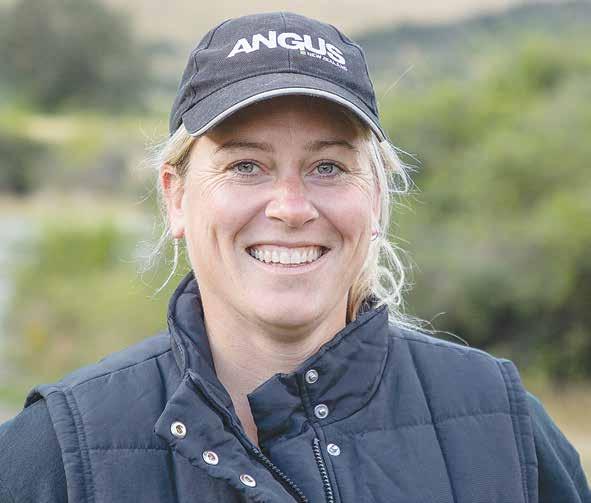
“This is key to helping improve our beef industry moving forward.”
The series is being hosted by Kate Pont – a sheep and beef farmer who, along with her husband Chris, farm in Southland.
“Kate was the ideal choice to host ‘Raising the Steaks’,” explains Allan.
“She is hungry for knowledge and has a real desire for learning and sharing knowledge. To top it off she has a natural, approachable style that farmers will resonate with.”
The platform kicks off with a series of videos on the latest weighing equipment. Information is provided on how to use and best record data to assist with on-farm decision making.
‘Raising the Steaks’ is now available on YouTube for farmers to subscribe to. Alongside YouTube there is a Facebook page which is intended as a place where farmers can openly discuss and comment on what they would like more answers from key industry experts.
WITH ELECTION day only a few days away and advance voting well underway, there appears to be a mood for change in rural and provincial New Zealand.
The last election saw a number of regional seats turn red on the back of Labour’s Covid response and the complete disarray that the National Party was in back in September 2020.
However, it is clear that most of the Labour MPs currently occupying these provincial seats will be looking for employment come October 15. There won’t be too many tears shed in rural NZ about this.
That’s hardly surprising considering the majority of farmers and rural people would view the current Labour Government as one of the worst the primary sector has ever had to deal with.
It has not only been its legislative agenda, that has seen a myriad of costly regulations imposed on the sector, but also the current administration’s tin ear when it comes to listening to the concerns expressed by farmers.
The Labour Government’s ‘we know best’ attitude – personified by Environment Minister David Parker and the constant haranguing of farmers by Agriculture Minister Damien O’Connor for daring to criticise the burdensome regulatory regime – will have many farmers waiting with pen in hand at the voting booth to send it a clear message.
It can only be hoped that if a new government is elected, the number of farmer candidates in both National and ACT will bring a more farmer-centric view to government policies directed at the rural sector.
As a Beef + Lamb NZ’s recent report highlighting the cumulative effects of the Government’s environmental reform agenda shows, it has created significant administrative and financial burden for farmers.
As chief executive Sam McIvor says, this report reinforces BLNZ’s calls for the new government – no matter which political party wins the general election – to press pause on rules and review current or proposed rules to ensure they’re fit for purpose.
The winds of change appear to be blowing in rural NZ and a likely end to the Labourled regime of the past six years will not be mourned by many in the regional heartland.
Your old mate reckons he now understands just why state farmer Pāmu (Landcorp in everyday man’s language) is such a dog of an investment and why it returns a paltry dividend – relative to the huge capital tied up in the SOE – to the country’s hard-pressed taxpayers. Reading the state farmer’s latest quarterly report, it makes the following statement: “Our purpose extends beyond profit. We aim to nurture and enrich the land on which we farm, balancing performance and the environment. We seek to ensure our farming activities contribute positively to ecosystems and communities…” It then goes on to crow about how it has “achieved Toitū carbonreduce farm certification across 50% of our farm portfolio”. Pāmu should just drop its virtue-signalling wokeness and get on with farming, then the whole country would be better off!

The Hound is astounded at the sheer audacity and bottle of (outgoing?) Agriculture Minister Damien O’Connor and his ability to bury his head in the sand. In a pre-election interview, the long-time West Coast MP claimed that “The Government is not to blame for on-farm pressures”.
O’Connor conveniently ignored all the regulations and red tape introduced under his watch –like low slope rules, freshwater reforms, proposed carbon pricing and biodiversity plans, to name but a few – which have added to costs and huge pressure on the country’s farmers. Instead, he went on to blame Covid and the Russo-Ukrainian war for all the woes farmers are presently facing. If ever there was an example of why O’Connor and his Labour colleagues are out of answers, ideas and time and should be out of office, this is it!
A mate of yours truly wonders if the impending departure of Silver Fern Farms chief executive Simon Limmer will see a number of other senior executives leave the meat processor and exporter. He queries if the cohort of exZespri executives Limmer – who was chief operating officer at the kiwifruit marketer prior to taking up the top job at SFF – has appointed to management positions at the meat processor and exporter may also will follow him out the door. According to SFF chair – ‘I don’t care where, as long as I am chair’ – Rob Hewett, the process to replace Limmer will probably take until early in the new year. But one can surmise that unless one of the Zespri mafia is given the top job, then it is likely that a few more of the top brass at SFF will exit stage left.
AUCKLAND SALES REPRESENTATIVE: Stephen Pollard Ph 021 963 166 stephenp@ruralnews.co.nz
Your canine crusader understands big power companies Genesis and Meridian recently coughed up some major funding to local iwi groups, under the auspices of the Treaty of Waitangi, as part of the renewal applications for their resource consents in relation to the Waitaki river. Apparently the iwi groups extracted some serious koha from both the energy companies in compensation for the historical loss of – among other things – rock art drawings and mahinga kai spots (fish gathering) when the river was dammed back in the 1930s to set up hydro power. All well and good, but no one will reveal just exactly how much was paid – rumoured to be well in the multi-millions. Of course, the heavy price coughed up won’t worry the electricity generators, they will just pass the cost on to hard-pressed power consumers. The question is how much is the Treaty costing us in electricity prices?
WELLINGTON SALES REPRESENTATIVE: Ron Mackay Ph 021 453 914 ronm@ruralnews.co.nz
HEAD OFFICE POSTAL ADDRESS: PO Box 331100, Takapuna, Auckland 0740 Phone 09-307 0399

PUBLISHER: Brian Hight Ph 09 307 0399
GENERAL MANAGER: Adam Fricker Ph 021-842 226

CONSULTING EDITOR: David Anderson Ph 09 307 0399 davida@ruralnews.co.nz

WAIKATO SALES REPRESENTATIVE: Lisa Wise Ph 027 369 9218 lisaw@ruralnews.co.nz
SOUTH ISLAND SALES REPRESENTATIVE: Kaye Sutherland Ph 021 221 1994 kayes@ruralnews.co.nz
DIGITAL STRATEGIST: Jessica Marshall Ph 021 0232 6446
“Yes, they’ll soon be dog tucker – which reminds me, I’ve been looking at your tupping figures Cyril.”
FOR A brief, humorous trip down memory lane, I recently caught some old video clips of the late Billy T James and also Kiwi icon and rural favourite, the late Fred Dagg.

I’m not sure how they both would go down in today’s world: they’d have a rather long list of apologies to make their way through, would be my guess! I’m sure someone somewhere would come up with something to be offended by.
Election ‘season’ used to be a great opportunity for good Kiwi humour to come to the fore. I remember Fred Dagg informing us there were a bunch of job opportunities coming up in Wellington shortly, so keep your eye on the Situations Vacant section in the paper. He explained that the job paid rather
well, no qualifications were necessary – so get yourself organised for a crack at the job!
Laughing at ourselves is a much healthier option than getting so easily offended at every possible opportunity. It surely is much more therapeutic for the soul.
It’s so obviously election season at the moment. It’s more of the same old, same old. Promises and still more promises. Freebies and
still more freebies. I’m struggling to think of any other ‘job’ where you get to spend other people’s money so flippantly!
It’s all seemingly without restraint, especially if your personal ideology calls for it. If what you have already got access to is not enough, what an easy fix – just pass a new law to increase your take!

For me, the term ‘political promises’ is really a classic oxymoron. After all, as I have mentioned before in my column, survey after survey has politicians fighting it out for the bottom spot when it comes to the people we trust the most. Promises?
Yeah, right!
A great question has been asked in different settings: “Who would you want in your foxhole with you when the shoot-
ing starts?” For me, not a single politician comes to mind, sorry! I have seen too much.
And the freebies? The truth is they are really vote catchers, and they’re not free either. Somebody gets to pay for it. So, guess what. It will be funded from the taxpayer’s purse. Yep, we the
people will get to pay for it yet again!
I have to admit it took me a while to get my brain around the MMP thing. I got the two votes thing – one for your electorate choice and then one for your party choice. What I didn’t fully appreciate is that if your party of choice does not make
it into Parliament then your party vote goes to another party who does make it in.
To illustrate, in the 2020 election around 225,000 party votes went to parties that did not make it into the Beehive.
Those votes do not get scrubbed, or mysteriously disappear into the outer
galaxies. They simply got redistributed among the parties who did get in.
Of course, those with the bigger share of the party vote from the elections get a bigger percentage of the 225,000.
These ‘votes’ benefit them the most.
If you don’t understand that, then I fail to see how you can vote intelligently.

Yes, I think it’s important to get out and vote. It’s a fleeting opportunity that comes our way once every three years, so let’s take advantage of it.

Again, I am so thankful that my future is in the hands of one I truly trust.
God Bless.
To contact Colin email: farmerschaplain@ ruralnews.co.nz







@rural_news


facebook.com/ruralnews


RURAL NEWS’ article
Putting Meat on the Bone (September 26) set out the NZ red meat sector’s call for agriculture and the production and export of beef and lamb to be put at the heart of a new economic strategy, as well as the need for critical changes to some of the environmental policies that have been rolled out over the last few years.
Since being elected as Beef + Lamb New Zealand (BLNZ) chair just over six months ago, farmers have been telling me about their frustrations at the wave of unworkable policies and rules. Not only are many of the rules impractical, but they won’t lead

to better environmental outcomes.
That’s been reinforced by conversations with
farmers at BLNZ woolshed meetings across the country in May and June.




There is still some confusion among some farmers and commenta-

tors about BLNZ’s position on emissions pricing and we have been working hard over the past few months to outline our stance.
I want to be clear that we no longer support the original He Waka Eke Noa proposal that was put to Government in 2021. This is in response to the very clear message that we received from farmers.
We’re advocating instead for the focus to be on setting up a measurement and reporting framework that is practical and useful for farmers.
This will likely be useful for farmers for meeting the reporting requirements of banks and later meat processers and exporters. It could also provide those farmers looking to reduce emissions with the data to make more informed decisions around their farming systems.
We do not believe that pricing is justified, particularly because our sector is likely to hit the legislated emissions reduction target, which is already higher than scientifically justified.
We are focused on getting the current methane targets reviewed and amended based on a warming approach.
The global understanding of climate change science has evolved significantly since New Zealand’s targets were set in 2019.
strates the importance of taking a warming-centred approach to emissions reduction.
BLNZ, alongside DairyNZ and Federated Farmers, is also pushing for the reporting of warming in conjunction with emissions.
It is critical we consider the most up-to-date science to give farmers confidence about what they are being asked to do. This research will help work out the most appropriate way agriculture can contribute to New Zealand’s climate goals.
BLNZ partnered with Federated Farmers and DairyNZ to commission research led by internationally respected climate scientist Professor Myles Allen, professor of Geosystem Science at the UK’s Oxford University, to measure the warming impact of New Zealand’s current methane targets.
The report was timed for the start of the Climate Change Commission’s review of the methane targets in 2024. The research confirmed that the current targets are too high and would see methane offset all of the expected additional warming from carbon dioxide and nitrous oxide from the entire New Zealand economy.
The current targets would see New Zealand peak its warming in the 2030s and reverse back to 2022-27 levels –well ahead of most other countries, which are currently aiming to achieve peak warming (‘net zero’) from 2050.
The research also found that if other countries meet their existing emissions reduction commitments, then a 15% reduction in methane would see New Zealand methane contribute no additional warming from 2020 levels.
This is significantly lower than the current government-set methane reduction range of 24-47% and demon-
It will make a critical contribution to the conversation about climate change and around the serious equity concerns for farmers who may be being asked to do more of the heavy lifting, and bear more of the cost, than other parts of the economy.
We have submitted this research to the Climate Change Commission and are asking them to take these findings into account and set targets based on a climate warming approach.
Climate change is an issue that’s not going to go away, but we are focused on getting a fair outcome with policy settings that sees farmers play their role without putting our production at risk.
In addition to this work to get the policy settings right, we are continuing to invest in the tools to help farmers reduce their emissions, which may provide an opportunity for agriculture to be part of the solution and be rewarded for the role we
We will continue to go into bat for farmers and New Zealand’s rural communities to ensure we are not being asked to do more than our fair share in emissions reductions, that we are rewarded for our efforts in any reductions we make and recognised for the role sequestration on our farms play.
Kate Acland is chair of Beef+Lamb NZ
play.•
I want to be clear that we no longer support the original He Waka Eke Noa proposal that was put to Government in 2021. This is in response to the very clear message that we received from farmers.

IT IS estimated more than half a million wooden vineyard posts get broken every year in Marlborough.
However, the environmental consequence of their CCA treatment rules out burning or burying the posts. This means there are piles of old posts on every vineyard, with growers scratching their heads about what to do with them.
The recent opening of Future Post’s second soft plastics recycling facility at the former Timberlink site in Blenheim will be welcomed by an industry that is taking huge strides to embrace improved sustainability.
The Future Post story is one of genuine Kiwi ingenuity. It saw the com-
pany’s founder Jerome Wenzlick working as a farmer and fencing contractor for 15 years seeing timber post quality slipping, wastage increasing because of breakages and struggles with continuity of supply.
“Surely, if plastics are
this tough, we should be making fence posts from them?” he thought. Then a chance meeting with farmer and recycling guru Bindi Ground led to a business partnership being formed producing premium fencing products from plastic. Future
Post was born.

A research trip to the US to research plastics recycling, was followed with a period of R&D, with a production plant built at Tokoroa with the help of local company South Waikato Precision Engineering. This
led to the eventual set up of a factory in 2018 at Waiuku, south of Auckland.
Today, the Waiuku factory takes in bales of recycled HDPE plastics including the infamous Fonterra ‘soft’ milk bottles and a range of soft plastics sourced from supermarkets and regional collection hubs. Broken down into ‘chips’, the plastics are blended into a secret recipe which is then pushed through an extrusion plant, emerging as a largelysolid black post. The items are then cured by passing through a waterbath to become the finished product.
Currently posts are
made in 125mm diameter rounds up to 2.4m in length; 200mm diameter rounds for use as strainers are up to 2.7m in length and 135mm square section posts up to 2.4m long.
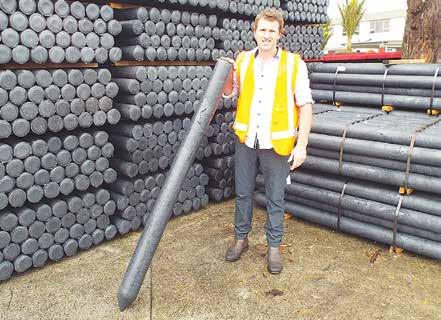
Said to be as strong as timber, the plastic posts can be worked with the same tools as wooden ones and are sawn and easily drilled, using standard staples in the normal manner. They are also suitable for driving with mechanical posthitters and don’t expose fencers to any splinters.
Claimed maximum life is over 50 years, compared to the more typical 15 to 20 years for timber. The product is

fully Bio-Gro NZ Certified and currently available through many rural supply stores at a slight premium over its wooden equivalent.
Hassan Wong, Future Post general manager, said the Waiuku-based company has processed 1800 tonnes of recycled plastic in the last 12 months to make their post. However, he believes this figure is likely to jump to over 4000 tonnes per year with the addition of the new factory. As the country’s largest wine producing region, Marlborough used a lot of posts, which Wong says made Blenheim the perfect place to make them.
Your life may depend on this
A HAWKE’S Bay farming couple cut off after Cyclone Gabrielle are thankful to the people and the generosity that helped get them through.
Anna and Nick Dinneen, who farm sheep and beef in Puketitiri about 50 kilometers northwest of Napier, woke up on February 14 to the ominous sounds of rushing water and rocks rumbling down the nearby hillsides.

“It was like having the Waikato River suddenly emerge on your farm; the roar was pretty sobering,” Anna says.

“It was just incredible, the slips were everywhere, all the fences were washed out, it was pretty surreal really,” Nick adds.
They still had cell coverage and as the morning went on, the couple received the alarming news that many bridges in the region had been washed away.
Access to their property became impossible after an embankment was scoured away by the river. Beyond that, Rissington bridge, on the main route between Puketitiri and Napier, was completely washed away.
Isolated on their farm, the couple began the
daunting task of trying to assess the damage –nothing short of a disaster.

Animals were washed away, about 20km of fencing was lost, and slips had come down across almost every track on their property.
“Yeah … it is challenging, after a storm like Gabrielle. It really knocks you back, and you think, ‘oh God, what do I do first, and how do we get through it?’” Nick says.
For the next three weeks the couple would be totally isolated on their farm and were cut off from town for about two months. Across the region, as people were coming to terms with the scale of the damage, plans were being made to get relief to people like the Dinneens.
As well as support from government agencies, including Civil Defence and the Red Cross, organisations like The Evergreen Foundation were swinging into action.
The Evergreen Foundation Trustee and Tumu Group managing director John O’Sullivan says a $100,000 initial relief fund was created the first weekend after Gabri-
elle, targeting the horticultural and agricultural sectors. A cross-sector industry panel was also established to manage the allocation of the funds.

“We quickly realised there were a lot of cut-off communities, so initially we were co-ordinating the gathering of things they needed, and getting it flown into those areas,” O’Sullivan explains.
At first, that included helicopter and fixed-wing flights, carrying supplies like fuel, pet food, satellite phones, groceries and farming gear – even the occasional box of beer.
He says the Evergreen board was always conscious that their efforts should complement those of Civil Defence and Red Cross, rather than overlap them.
As the relief fund grew, with donations from many different organisations and businesses, the scope of the relief they could offer widened.
On top of providing food and supplies to isolated residents, they also helped fund security systems for a community concerned about looting, as well as supporting

many community events, which helped those communities come together and support each other.
The Foundation also helped ensure students could continue their education, by giving boarding schools funding to sort out logistics for affected pupils.
It also supported Hawke’s Bay Clean-Up teams, that were out
removing silt from inundated properties, and donated fencing gear to farmers to help them get back on track.
O’Sullivan says Evergreen has a particular focus on the agricultural and horticultural sectors. In the weeks following Gabrielle, it realised the need for a programme to help growers retrieve and clean their unsanitary silt-covered produce bins, which were scattered across neighbouring properties. Evergreen’s bin programme has so far collected, cleaned and returned 11,000 bins free of charge, with many more to go.
“They were long days for the team, but satisfying – because you knew there was a need, and as a part of the community, you know there’s a time to stand up.”
Back in Puketitiri, the Dinneens say those flights, and the constant checking in with them, made them feel a lot better about their situation.
“I would say, in the first five days, we had more choppers in here than we had cars in the previous five years,” Anna says.
One of the larger
donations to Evergreen’s relief fund was made by ANZ New Zealand, which gave an initial donation of $550,000.
Those funds came from the $3 million ANZ pledged to support horticulture and agriculture groups, businesses and Iwi organisations with the response and recovery following Cyclone

Gabrielle.
Chief executive Antonia Watson says as New Zealand’s largest bank, ANZ recognised the need to step up and help Hawke’s Bay and Tairāwhiti communities when they needed it most.


“No one knows their region better than locals, so when we were choos-
ing where to donate, we were really mindful of that,” she says. “After seeing what The Evergreen Foundation has accomplished, and continues to accomplish in Hawke’s Bay and Tairawhiti, we couldn’t be happier.”
The Evergreen Foundation trustee Brendan O’Sullivan says ANZ’s
donation couldn’t have come at a better time, as when it came through, the amount of funding available was beginning to dip.
“We’re incredibly thankful to all of those people and organisations who have donated funds, and we’re really proud to have been able to coordinate that relief,” Bren-
dan said.
For those on the receiving end, sometimes it can be unclear exactly where the help is coming from, but as the Dinneens say, it is always appreciated.
“You never really knew who had funded it, whether it was Red Cross or Civil Defence or some other private funderbut if anyone ever gets the chance to donate to something like that,
just know that there are people out there on the receiving end, and they are really, really grateful. “It was very good community support –people looking after one another.”
ONE OF the ways




Beef+Lamb New Zealand (B+LNZ) is working to support farmers in addressing the challenges they face is through our extensive research and development (R&D) programmes.
It’s critical that
research keeps evolving, as new challenges arise, such as the emergence of new diseases or environmental pressures. Our approach to R&D is multi-pronged. Alongside profitability and productivity, we also consider the human elements of farming, the social issues and drivers, environmen-
tal challenges, animal health and welfare. R&D underpins all of this.
Over the last few years, we have been undertaking major work into facial eczema (FE) and gastrointestinal parasites – applying new science to issues which have been consistent longstanding problems for

farmers. As part of building new knowledge of FE, we have just launched a groundbreaking piece of research where we aim to work with 350 farmers –22 from every region of the country – who will collect samples of sheep poo for us from OctoberMay for three years.
Scientific analysis of









this will help fill gaps in our understanding of FE’s prevalence and whether a warming climate will have an effect on its distribution. We are currently recruiting farmers for this programme, regardless of whether the farm has experienced FE or not, and are keen to hear from any who would like to be involved. Farmers can express their interest in participating in the facial eczema research study by registering their details at https://beeflambnz.com/ FEstudy
Our parasite research is focused on supporting farmers to make the best decisions about treating animals for parasites and is informed by the Wormwise programme.
We have a test group of farmers in the Wairarapa, who are working with a facilitator to learn about the ‘101’ of parasite treatment, while also sharing their own approaches and systems. There are about 11 farmers in the group and every one of them has made changes to their systems because of this work. We are looking to expand this approach around the country. We have also initiated work to develop a new approach to iden-
tify gastrointestinal parasite species.
The Hill Country Futures programme, finishing this year, focused on future proofing the profitability, sustainability and wellbeing of New Zealand hill country, including a very significant amount of research into forages (plants suitable for grazing animals).
We are also working in partnership with others for a Northland-focused programme on resilient forages.




In terms of New Zealand geography, Northland is where the impacts of climate change are expected before the rest of the country.
Forages may not readily adapt to the climate that is coming, so it’s about how to give farmers the right tools and solutions to be best prepared to adapt and still be in a position to feed their animals.
All of these areas of research are expected to have a major positive impact on farmers’ productivity and profitability and demonstrate the value of how we invest in farmers’ futures.
A KEY factor in the dramatic failure of commonly used triple drenches is that these are not effective on 27% of New Zealand sheep farms.
This latest data comes from Techion’s DrenchSmart service, a faecal egg count reduction test (FECRT) that independently reports to farmers on which drench actives are working effectively on their farms and which are not.
This level of drench failure mirrors other industry reports and again highlights the increasing productivity and sustainability threat to the sheep farming sector.
In 2020 Techion, the company that developed the FECPAKG2 parasite testing platform, reported the cost of undetected drench resistance was $48 million a year. Company founder and chief executive Greg Mirams says that building on data collected over the past 18 years, in just the past three years the company has seen triple drench failure increase from 15% of properties to 27% in 2023.
According to Wormwise programme manager, Ginny Dodunski, farms using untested, partially effective drenches will not see visual signs until things are quite serious.
The reduction in drench effectiveness can have a devastating impact on the wellbeing and performance of livestock.
with BZ/Lev combinations failing on 50% of properties, while Lev/Aba combinations were failing on 32% of properties.
“In two cases this year the change in drench efficacy on the property was so significant that we had to go back and test again as we didn’t believe the changes could be so dramatic over three years,” Mirams says.
“We’re seeing the reduction in drench effectiveness increasing significantly. This can have a devastating impact on the farmer, their mental health, their property value and the wellbeing and performance of their stock.”
loss are becoming more common, there are sustainable and cost-effective options for farmers to improve productivity and reduce costs.
“In the intervening years farms can quickly be breeding high numbers of drench resistant worms,” she explains. “If a drench is only 70% effective, each time that drench is given it’s effectively leaving 30% of the worms behind. These then have three weeks to continue to breed and lay eggs. If you’re drenching every 28 days, it’s obvious how quickly resistance can build up.”
Mirams says the days of farmers simply assuming a triple drench will work are gone.
“With limited effective quarantine protection in place, farmers are often unwittingly importing triple drench resistance onto their properties,” he
explains. “Many farmers have not tested whether their drenches are effective and as a result are suffering production losses they are not aware of.”
Mirams adds that farmers generally only become aware there is a problem when they experience poor lamb performance in late autumn, or a large tail end in hoggets or ewes through the winter.
“Unfortunately, when farmers observe these production losses, the drench has likely been failing for years,” he adds.
“With animal performance on many farms so dependent on the use of effective drenches, when they fail, production
TECHION’S 2017 study, undertaken with UK retailer Sainsbury’s, reported undetected drench resistance reduced carcass value by 14%.
Analysis of the 2023 MPI statistics shows that 17,964,138 lambs went for processing in the 2022-2023 financial year.
It is calculated that undetected drench resistance could be costing the New Zealand sheep sector $98 million in 2023. At an individual farm level, for a property producing 4000 lambs annually, undetected drench resistance may reduce income by an estimated $81,200 per year.


“Improving productivity and sustainability is critical for the long-term future of the lamb supply chain,” says Gavin Hodgson, Sainsbury’s head of livestock,
who was integral in commissioning the study.
“The increasing threat of drench resistance, the viability of the lamb sector and harsh climatic conditions for farms across the United Kingdom and New Zealand pose a significant threat to farmers,” he adds.
“That’s why it’s critical for farmers to know the effectiveness of the treatments they use. As well as controlling parasites this knowledge will help meet customer demand for transparency by reducing farming inputs.”
Miriams says it is critical farmers test the efficacy of the drenches they use and utilise alternative measures to control parasites and protect the drenches which are still working effectively.
losses can be significant.” The analysis also
found that other drench options fared no better,
He says while cases of drench failure production
“It begins with a whole farm approach; instead of relying solely on drenches to control parasites farmers must utilise a range of tools. These include better nutrition of breeding stock, grazing management, pasture types, stock class options, crossgrazing and genetics.” Mirams believe the key to the success of a farm system approach to worms is easy access to FEC data, which allows timely decisions and enables monitoring of the results of management changes.
We deliberately challenge our Romneys by farming them on unfertilised native hill country in order to provide the maximum selection pressure and expose ‘soft’ sheep.

FERTILITY
GROWTH RATE & SURVIVAL
Over the last 20 years ewes (including 2ths) have scanned between 190% and 215% despite droughts.
Over the same period weaning weights (adj. 100 days) have exceeded 36kg from a lambing % consistently above 150%.
• All sheep DNA and SIL recorded.
• Ram hoggets have been eye muscle scanned since 1996.

• Ewe hoggets have been mated (to Romney sires) for over 20 years.
• Breeding programme puts an emphasis on worm resilience - lambs drenched only once prior to autumn. FE tolerance introduced more recently.
• Scored for dags and feet shape. Sires DNA rated for footrot and cold tolerance.
• We are ‘hands on’ breeders with a focus on detail and quality.
• We take an uncompromising approach - sheep must constantly measure up.
We aim to breed superior Romneys that produce the most from the least input.
& South Suffolks
GEOFF & BARB CROKER Longbush, RD 4, Masterton email: bob_barb@slingshot.co.nz • Ph: 06-372 7820 www.glenviewromneys.co.nz
A PUKEKOHE deer farmer was recently fined $12,000 for not tagging 278 animals under the

National Animal Identification and Tracing (NAIT) scheme. Under the NAIT
scheme all cattle or deer must be fitted with a tag and registered in the system by the time the
animal is 180 days old, or before the animal is moved off farm. Late last month,
Lester Harrison Nixon was sentenced in the Papakura District Court on two charges under the National Animal Identification and Tracing Act, following a successful prosecution by Ministry for Primary Industries.
“NAIT tags are there to track and trace animals.
“They play a critical role in helping to ensure we can respond quickly and accurately in the event of a biosecurity incursion,” explained MPI acting national manager animal welfare and NAIT compliance, Brendon Mikkelsen.
“When people in charge of animals disregard their NAIT obligations they put the whole agricultural sector at risk.”

MPI said it made inquiries with Nixon about outstanding animal movements on his NAIT account in 2021. He has three properties registered in the NAIT database.
“We found Mr Nixon had made little effort to comply with the NAIT system, advising us that he does not tag his deer
until just before they’re transported,” MPI reported. “He said he does not register the tags and that he had farmed for over 30 years without it (NAIT).”
During a search of one of Nixon’s properties where he had NAIT animals grazing, MPI found 132 deer not fitted with a NAIT tag and at another of his properties, a further 146 deer were also not fitted with tags.
In 2019, penalties in the NAIT Act increased tenfold to $100,000 for an individual, and up to $200,000 for a body corporate.
Mikkelsen says while receiving one of these penalties could hurt the bottom line for people in charge of animals, the inability to trace animals can have far reaching and serious consequences for everyone.
“The NAIT tag and registration system is only as effective as the information entered in. If you are unsure about what you need to do, reach out,” he added. “There is plenty of information, advice and support available.”
ELECTRIC CARS and big American trucks can both bring a little anxiety, but for different reasons.
The former centres around the amount of kilometres to your destination on a single charge and the latter about how many litres of fossil fuel are needed to cover 100km.
Having recently spent a week with a 2023 Chevrolet Silverado LTZ Premium, I’m happy to report that fuel consumption is a particularly overrated anxiety that’s not worth worrying about.
Obviously in a different league to those pesky one tonne utes, with its wide chrome enhanced front end with daytime running lights and long flanks, its higher seat-
ing position gives a panoramic view and the assistance of multiple camera views means oversize doesn’t mean overawed in the tight spots.
Sporting a 6.2-litre EcoTech 3, V8 lump that delivers 313kw (420hp) with 624Nm torque means power and thrust in abundance. This combination means the

100km/h speed limit comes up at a leisurely 1240rpm. Complemented by a silky smooth 10-speed transmission, out on the open road, it’s really a case of selecting D and then letting the big Yank do its thang!
Looking at the transmission in a little more detail, a strange foible is certain to irritate many users. After starting, the
seat belt must be engaged before forward or reverse is activated. This becomes a nuisance in the yard when you want to hitch up to a trailer at low speed. Strangely, after that first movement, the seat belt engagement isn’t then required, so one can predict a trip to the breakers yard to get a spare seat belt buckle.
Weighing in at 2500kg,
with a wheelbase of 3745mm, means the cabin is spacious. It has wide, deep fronts seats – equipped with heating and cooling – and the rear occupants are treated to comfort and importantly plenty of legroom.
A wide central 13.4inch colour touchscreen offers an expansive array of settings, audio and visual links. Meanwhile, ahead of the driver is a 12.3-inch instrument cluster that offers comprehensive vehicle info – including that allimportant fuel consump-
tion data. Particularly useful is the heads-up display that helps confirm speed and cruise control settings on the open road. This will hopefully reduce the chance of an impromptu interview with the boys in blue.
Talking about driver aids, the LTZ features an expansive safety suite.
These include the cameras, the likes of Rear Cross Traffic Alerts, Electronic Stability with Traction Control and Front Collision Alert with Low Speed Autonomous Braking.
For those looking to
tow a heavy load, the Silverado trumps the best ute with a solid one tonne extra, with a rating of 4500kg, the push-button, two speed transfer case means venturing off the tarseal is also anxiety-free.
Back to those fuel consumption figures, a swift 600km round trip across the Waikato and the King Country to National Park certainly wasn’t too bad on the wallet. This returned an average for the trip of a rather sensible 11.4 l/100km, using the set and forget cruise control. A trip to Jaffa Land dropped that figure to only 10.2 l/100km, meaning those with a good understanding on how to deliver a light touch to the two-pedal layout, should arrive at their destination without a furrowed brow.

Sporting a 6.2-litre
ANY YOUNG fella with a Ford 5000 and an 80-inch Howard Rotovator can’t fail to be impressed by a slightly larger combination that recently set new record by cultivating 770ha in 24 hours.

The new record took place on a farm near the town of Slatina in Romania, with the successful double act being a 691hp John Deere 9RX 640 tracked machine mated to a 18.4m Bednar Swifterdisc XE 18400 Mega disc cultivator. The combination dealt to stubbles of wheat, canola, peas and beans in six paddocks – the largest being 161ha.
Achieved by a team of eight people, the tractor was only stopped for just 24 minutes during the 24-hour period – to change drivers, refill the 1490 litre diesel tank and to deal with a small hydraulic leak on the cultivator.

This beat the previous record, set as far back as 2007, by 125.4ha. That pairing was a Challenger MT875B and 14m Gregoire Besson cultivator.
Working at a depth
Robust UDOR Italian ceramic plunger pump with brass head. 10 models, both direct drive and with low rpm pump and gear box.
Genuine Honda with 3 yr warranty.


RANGE
of 7.0cm, the cultivator – equipped with 560mm diameter discs (5mm) and a 630mm diameter rear V-Ring packer with scrapers – achieved an average output of 32.6ha/
hour. Meanwhile, the 9RX powerhouse hit maximum speeds of 21km/h and covered a total distance of 450.7km.
The tractor averaged just over 3.0 litres of
diesel per hectare with a total fuel use of 2355.61 litres.
Achieved by a team of eight people, the tractor was only stopped for just 24 minutes during
the 24-hour period – to change drivers, refill the 1490 litre diesel tank and to deal with a small hydraulic leak on the cultivator.
The Czech manufacturer introduced the Swifterdisc XE Mega series in 2021 and currently offers three models from 14.4m to 18.4m working widths. The XE 18400 weighs in at 22.3 tonnes and folds to a transport width of only 3 metres wide by 4 metres high.
The RX 640 stats are no less impressive, tipping the scales at around 25.5 tonnes and boasting a 13.6 litre JD twin turbo engine mated to an 18-stage powershift transmission.
UDOR ceramic plunger pump. Heavy-duty 4 pole electric motor. 230 & 400-volt models. Diesel hot water heater.
Two 230 volt and four 400 volt models with UDOR ceramic plunger pump & low rpm 4 pole (1440 rpm) motor for extended service life.
HURRICANE PTO WATERBLASTER/ SPRAYER

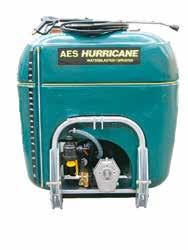
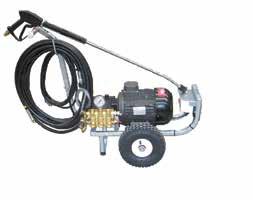
250 or 600 litre tank, 540 rpm gearbox. New UDOR 3000 psi 35L/min pump. Blast, spray and drain clean!
CULTIVATION, DRILLING and planting specialist Väderstad has announced the addition of a new tined cultivator to its product range.

Robust Italian made 230V Electric Waterblasters
H.D. 4 Pole (1450 RPM) Motor & pump with ceramic plungers and brass head Output 1450 psi, grunty 11 L/min flow rate.
UDOR
High quality Italian diaphragm pumps. From 17L/min to 240L/min. 290 psi to 580 psi

SIMMM POWER CLEANER & POWER GUN SAVE $$$



The all-new mounted Väderstad Cultus HD sets a new standard in the mounted tine cultivator segment. The Cultus HD 425-525 is designed to offer exact depth control and high field performance. The Cultus HD is available in working widths of 4.25 or 5.25m and equipped with three rows of tines with 27cm spacing and a maximum working depth of 30cm.
At the heart of the machine is the new heavy-duty Cultus HD tine, with a release force up to 680kg. This allows the machine to maintain its working depth in a full range of conditions. The cultivator is said to maintain a high
force against the soil; when the HD tine encounters a heavy or immoveable object, it is able to fully release out of the soil to pass the obstacle. When reentering the soil, the high spring tension will see a quicker return to the target depth, resulting in more consistent result over the entire paddock. Built with the operator in mind, depth is set from the cab. Meanwhile, the Dynamic Control automatic leveller adjustment system ensures the levellers are always working in optimal position, taking away the need for manual adjustment.
Cultus HD can be fitted with a wide range of high-quality Väderstad points and MixIn shins, designed, tested and produced at the Väderstad Components genuine parts factory. – Mark Daniel

FENDT HAS extended its VarioDrive concept further down the power range with a totally new Vario 600, four-cylinder range.
The four-model lineup offers 149hp to 209hp and “boosting” to a maximum 164hp to 224hp.
All the models use a 5.0litre, Agco Power Core 50 motor, partnered with a TA150 transmission, mirroring the 700 Gen 7 introduced in 2022.

The new series also uses the low engine speed arrangement that Fendt has been introducing in its larger models. Max torque in the largest 620 model is 950Nm between 1200 and 1600rpm. The Finnish built engine uses SCR, DOC and DPF for Stage V, and like the FPT engine in CNH tractors it doesn’t use any EGR.
Maximum speed for the Vario 600 is 50km/h, delivered at only which 1350rpm. Meanwhile, the drive to the front and rear axles is separate, helping to reduce the turning circle to 10.5m.
The front wheels-typ-
ically 540/65 R30 can be sped up to effectively pull the tractor aroundnot dissimilar to Japanese brands such as Kubota and Iseki have used in somewhat smaller models.

While the four-cylinder layout cannot really be described as dainty, its operating weight of 7.7t and a 2.72m wheelbase, still manages to deliver a 5.8 tonne payload. VarioGrip tyre pressure control also makes its way down the Fendt power line up, with the option of rear tyres up to 650/65 R42.
Hydraulic output is impressive at 152l/min, with availability of a 205l/ min option. Layout sees up to five spools at the rear, two up front and up to three mid-mounts.

Rear lift capacity is a respectable 9.8 tonnes.
In the cabin, Fendt has plucked the platform from the current 700 G7.
The Vario 614, 616, 618 and 620 models will be showcased at its official launch at bi-annual Agritechnica Event in just a few weeks, although their availability and delivery are yet to be confirmed in the southern hemisphere.
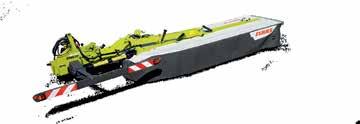

Agricultural Contractors (NAAC) – have launched the exchange scheme.


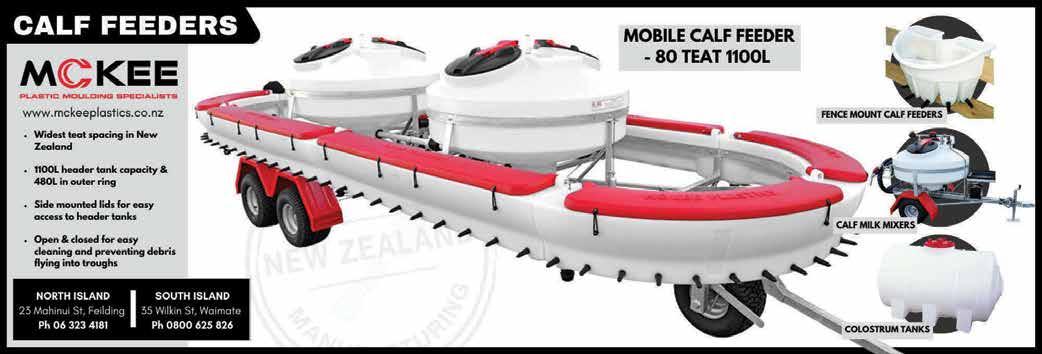
A NEW partnership to try and help solve the labour shortage gap for rural contractors in both NZ and the UK has recently been established.

Realising that Covid and closed borders had severed a lot of the international ties, the Rural Contractors New Zealand Inc (RCNZ) and its UK equivalent – the National Association of
“While some of the bigger players can sort experienced labour, many contractors are a little stuck on connecting to the UK labour market,” explains RCNZ chief executive Andrew Olsen. “We believe this is where the trade bodies can help out.”
NAAC boss Jill Hewitt says the rural contracting industry in the UK
is having real problems in sourcing professional, experienced labour particularly in seasonal peaks.



“The NAAC and RCNZ are working in partnership to assist our members in exchanging labour,” she says. “This is a fantastic opportunity for our team members to gain experience, see the world and keep busy yearround. It also takes the pressure off our contracting members retaining
staff through the winter.”
With border entry back to some form of normality since Covid, it should be possible for staff to work year-round across the world. The NZ Government provides UK citizens a holiday working visa for people aged up to 35 who have not been to NZ before and an employer-sponsored visa option for skilled workers who have been before and wish to return. The UK also welcomes NZ workers, aged 18 to 35
via the Youth Mobility Scheme to gain a working visa for up to 24 months. In addition, there is also a skilled worker option, sponsored by a UK employer Both organisations say with the season in NZ just around the corner, there are opportunities for UK agricultural workers to get a visa and start work in October, then return to the UK ready for the spring campaign – alongside any NZ rural contractors seeking work
in the country.
The process, exclusive to members of both associations and their workers, is relatively simple. Firstly, the contractor offering potential positions needs to be a member of RCNZ or NAAC. UK workers should email their CV’s to office@ruralcontractors.org.nz. These will be circulated to RCNZ members who will make direct contact with workers to discuss potential employment.
NZ workers looking for positions in the UK can email their CVs to members@naac.co.uk. These will be forwarded to NAAC members, who can make direct contact with NZ workers to discuss potential employment and verify their credentials.
It should be noted that neither the NAAC nor RCNZ can verify the status or professionalism of exchange workers. This will be down to individual employees.
Since 1993











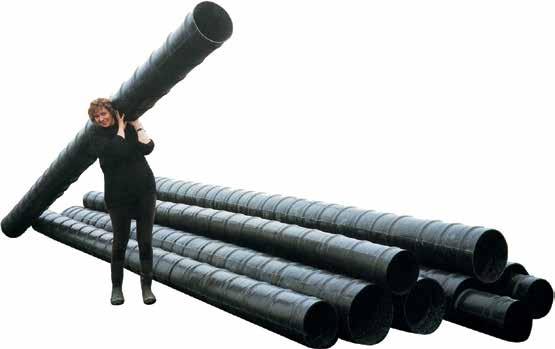





Celebrity Edge NZ Cruise
Feb 2, 2024 14 Days
First a 2-night stay in vibrant Sydney before an enchanting 11-night cruise around New Zealand's treasures. Marvel at iconic Milford, Dusky, and Doubtful Sounds, and the stunning Bay of Islands. Enjoy world-class entertainment and allinclusive main meals. Get aboard!

Nature Arts & The Capital


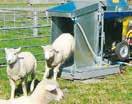
Feb 27, 2024 7 Days
Tour the breathtaking art-deco sights and the landscapes of Napier. Enjoy a Mission Estate Winery dinner. Venture into the Wairarapa, dramatic Cape Palliser to Martinborough. Then to Wellington - tour Te Papa, ride the cable car ride and take in movie magic at Weta Workshop. Cruise Brisbane to Hawaii






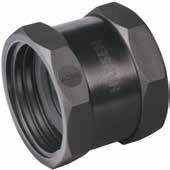








IN STOCK NOW!
Z200 SERIES
ZERO-TURN MOWERS
Heavy-duty 42”, 48” or 54” fabricated mower decks deliver performance and reliability
Simple changes to cutting height with the turn of a dial
High-back seat, plenty of legroom, adjustable handles, storage boxes and cup holders
ZERO-TURN MOWERS
Rugged, commercial grade transmissions and powerful engines for heavy duty applications
Soft and roomy, the high-back suspension seat keeps you comfortable during long mowing jobs


Steel welded mower decks (48” or 54”) provide outstanding, professional-level cutting
STARTING FROM $8,188
STARTING FROM 7,403
Full flat operator platform, high-back seat and cruise control provide comfort during long operation
Powerful twin cylinder petrol engines and hydrostatic transmissions for precise control
Fabricated mower decks provide years of dependable service. Available with 42” or 48” decks
+ GST Z242 ZERO-TURN MOWERPERFORMANCE-MATCHED PACKAGE WITH KUBOTA’S LAND PRIDE ATTACHMENTS.
BX SERIES OFFER
Receive $250 credit towards the purchase of Land Pride performance-matched attachments for your new Kubota BX Series tractor. Credit must be used at the time of purchasing the tractor.



RCR1242
ROTARY CUTTER DISC HARROW

Ideal for maintenance of grass and similar surface vegetation. A standard tailwheel reduces load on the tractor and improves performance on undulating ground.
Adjustable gang angle allows variable working intensity. Notched discs improve performance in tough conditions.
$250 ATTACHMENT OFFER
CREDIT ^
SCAN TO VIEW THE FULL LAND PRIDE RANGE
Indirect injection, 3 or 4-cylinder Kubota diesel engines
Large platform, power steering, easy-toread dash display and high-back seat to keep you comfortable
Your choice of reliable mechanical shuttle, synchro shuttle or HST Transmission
Category 1, 3-point hitch delivers 906kg lift capacity on the L3200/3800 and 1300kg on the L4600
PERFORMANCE-MATCHED PACKAGE WITH KUBOTA’S LAND PRIDE ATTACHMENTS.

FDR2584
Grooming mowers are ideal for maintaining lawns, sports ovals or turf grass surfaces. Up to 2.3m working width.
APS15600


Renovate existing pasture or establish new ones. The APS15 seeder is a unique and versatile solution with ability to prepare a seedbed and plant seed in one pass.
^L, M, MX Series offer: Receive $500 credit towards the purchase of Land Pride performance matched attachments for your new BX series tractor. Credit must be used at the time of purchasing the tractor. Choose from slashers, Seeders, Landscape Rakes, Rear Blades, Grading Scrapers, Box Scrapers, Quick Hitches, Mouldboard Ploughs, Post Hole Diggers, Disc Harrows, and Seed Bed Rollers. Offer expires 31/12/23 or while stock lasts.


Receive $500 credit towards the purchase of Land Pride performance matched attachments for your new



tractor. Credit must be used at the time of purchasing the tractor.
Grading
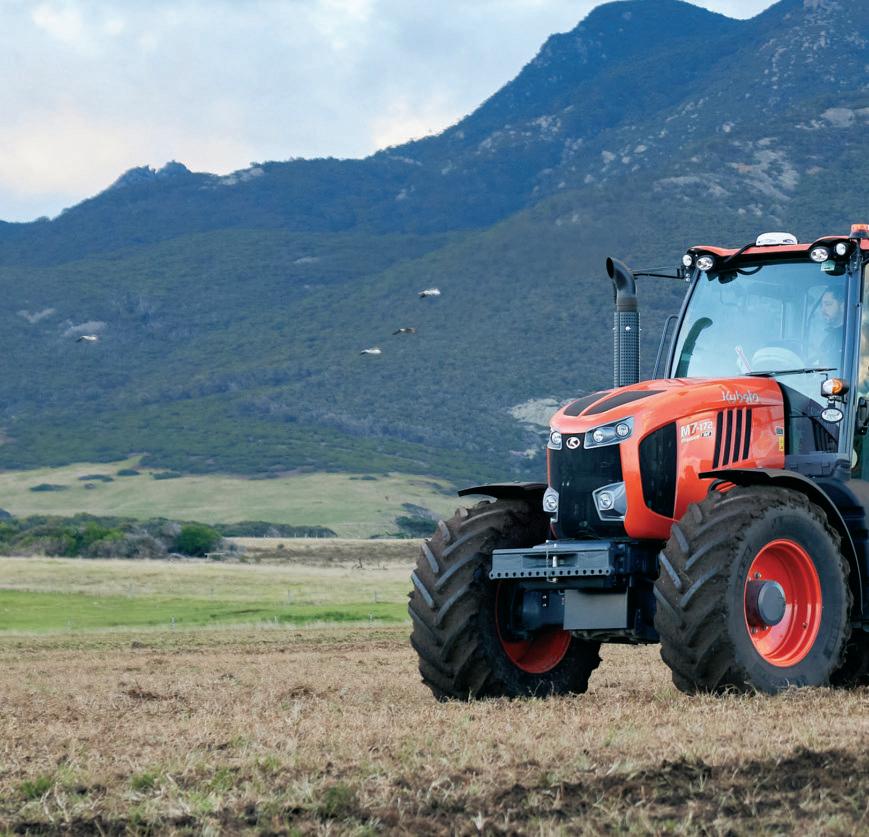
Land Pride and Great Plains Implements

THE KUBOTA M7-2 IS TRIED AND TESTED ACROSS



